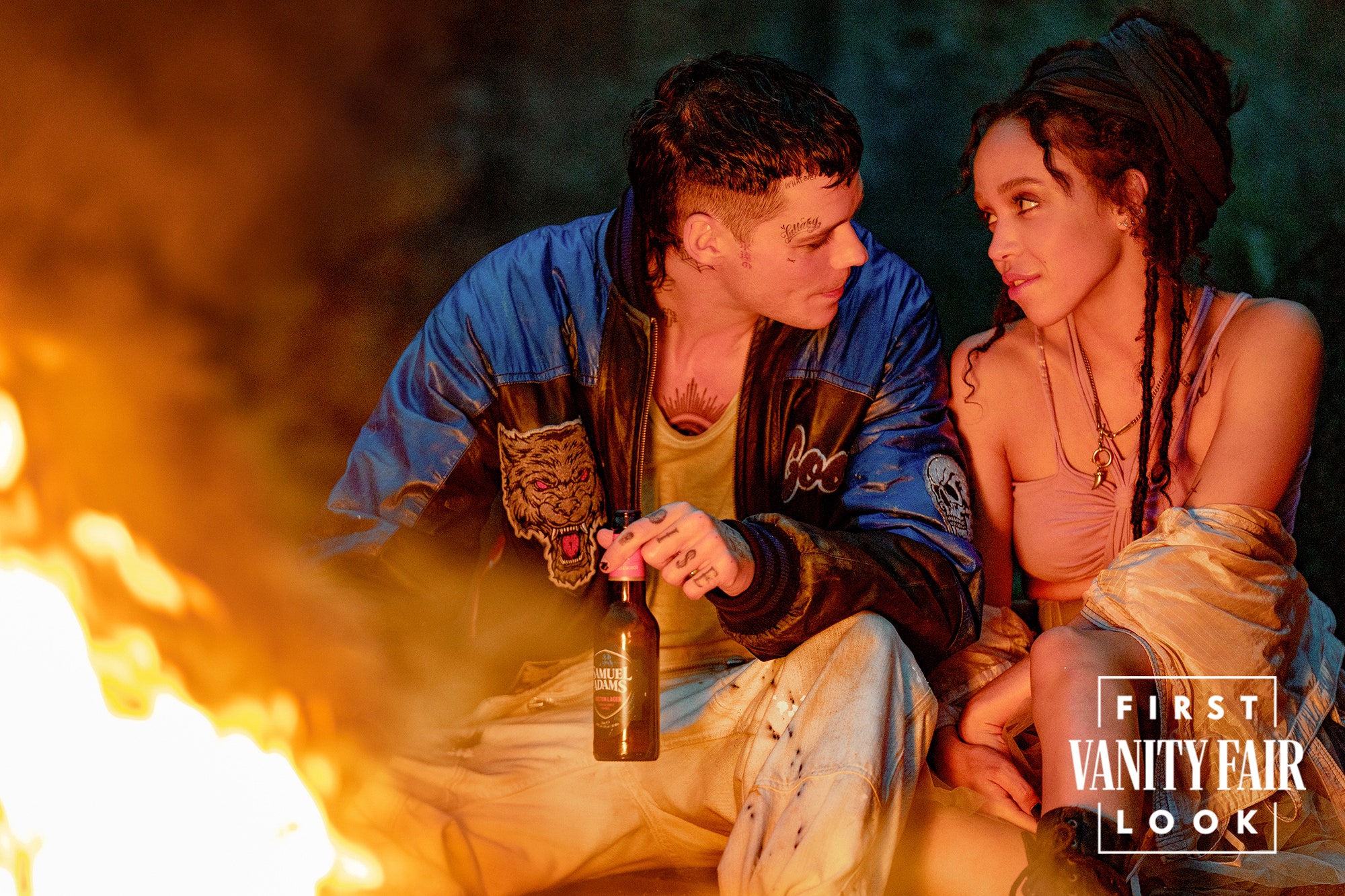Bill Skarsgård is probably best known in this country as the guy beneath Pennywise’s creepy-clown greasepaint in the recent It chillers. But that will likely change when audiences get their first look at the Swedish actor in director Rupert Sanders’s new big-screen take on The Crow. Skarsgård steps into the role of goth rocker Eric Draven, who, along with his lover, Shelly (FKA Twigs), is brutally murdered when the demons of Shelly’s past (in the form of a deliciously insinuating Danny Huston) catch up with them. Caught in a limbo state between the living and the dead, Eric sets out to avenge their deaths, walking the gossamer-fine line between the natural world and the supernatural one. “What drew me to this was the opportunity to make a dark romance, something that dealt with loss, grief, and the ethereal veil between life and death and reaching through that,” says Sanders, whose previous credits include 2012’s Snow White and the Huntsman and 2017’s Ghost in the Shell. Realizing he’s beginning to sound a little emo, the Brit laughs and adds, “Look, I grew up listening to Joy Division and the Cure, and this movie is a bit like a Cure song—the beauty of melancholy.”
Sanders knows that as The Crow heads toward its June 7 release date, much of the prerelease chatter will focus on the 1994 version starring Brandon Lee. And how could it not? It was on the set of that film that the broodingly handsome 28-year-old son of late martial-arts legend Bruce Lee was accidentally shot and killed in a firearms stunt gone awry—just as he was on the brink of becoming Hollywood’s next action star. Three decades later, the original Crow still holds up as a stylish pre–Marvel Studios adaptation of a graphic novel, but there’s also something decidedly mid-’90s about it. The dark, moody cinematography and rain-soaked alleys are right out of an MTV video, and the Stone Temple Pilots and Nine Inch Nails needle drops now feel like a snapshot of Hollywood’s house style in the post–Tim Burton Batman era.
The first Crow was a solid success at the box office ($50.6 million domestically on a budget of $23 million), as well as an eerily fitting epitaph to Lee’s promising life. Still, as much as Sanders makes clear that his new film is an entirely different take on James O’Barr’s source material, he also considers it a tribute of sorts to Lee’s memory. “Obviously, it was a terrible tragedy, and it’s definitely something that we’ve always had in mind through the making of the film,” he says. “Brandon was an original voice and I think he will always be synonymous with The Crow and I hope he’s proud of what we’ve done and how we’ve brought the story back again. His soul is very much alive in this film. There’s a real fragility and beauty to his version of the Crow, and I think Bill feels like he is a successor to that.”
While Eric’s and Shelly’s onscreen deaths occur in the opening minutes of the 1994 version of The Crow, Sanders says that he always wanted his version of the story to have a more even balance between light and dark. So we will see more of the smitten couple before tragedy steps in to tear them apart, making Eric’s quest for vengeance more emotionally resonant? As for whether audiences will buy into the romance, Sanders doesn’t seem too worried. “I never did any tests between Bill and Twigs,” says the director. “I had them for dinner when they first arrived [on set] in Prague and I was a bit like a nervous parent looking to see if there were any sparks, because you don’t know. And they were great. They hung out and were straight into it.”
As for Skarsgård’s chiseled and menacingly inked-up “dude with the dragon tattoo” look in the second half of the film (see photo of him standing in front of a mirror), Sanders says that his inspiration was less cribbed from O’Barr’s graphic novel or Lee’s previous incarnation than from his own life. “I think the beauty of Bill is that he has a disturbing beauty, and as he transforms through his loss he becomes this thing that even he can’t control. It’s that famous line: ‘Whoever fights monsters must be careful that they don’t become one.’ That look was me in the ’90s when we were squat-raving in London, [mixed with some modern influences] like Post Malone and Lil Peep. I hope people who are 19 today look at him and go, ‘That guy is us.’” That image captures the beginning of his transformation into the Crow. “It’s the moment we realize bad things are coming.”
More Great Stories from Vanity Fair
See 11 Spectacular Stars Unite for the 30th Annual Hollywood Issue
Inside Johnny Depp’s Epic Bromance With Saudi Crown Prince MBS
He Wrote About His Late Wife’s Affairs. He’s Ready to Move On.
Secrets, Threats, and the "Sixth Largest Nuclear Nation on Earth"
Who Were the Swans? Inside Truman Capote’s High Society
Cast Your Vote With the Official Vanity Fair Oscar Ballot
